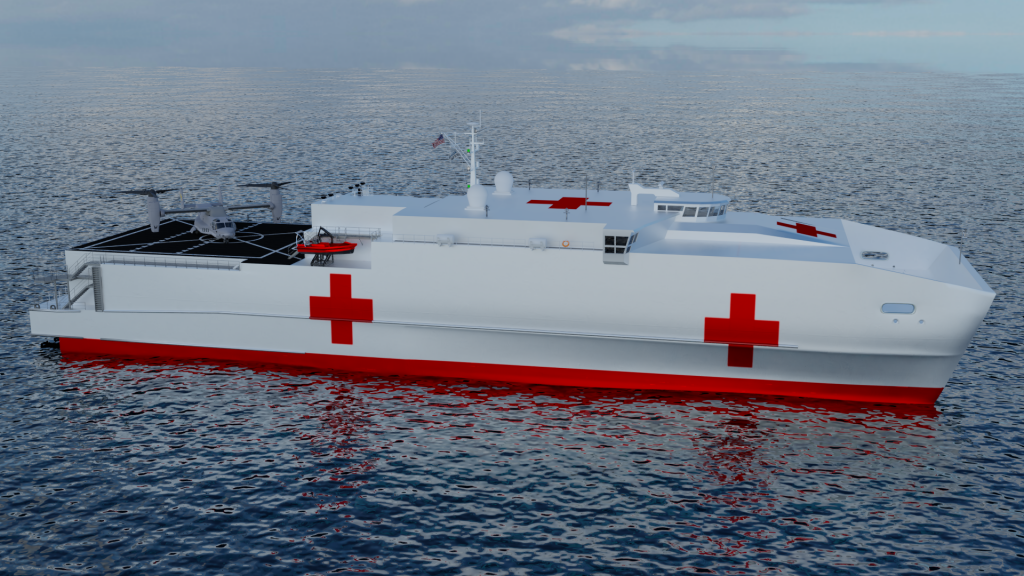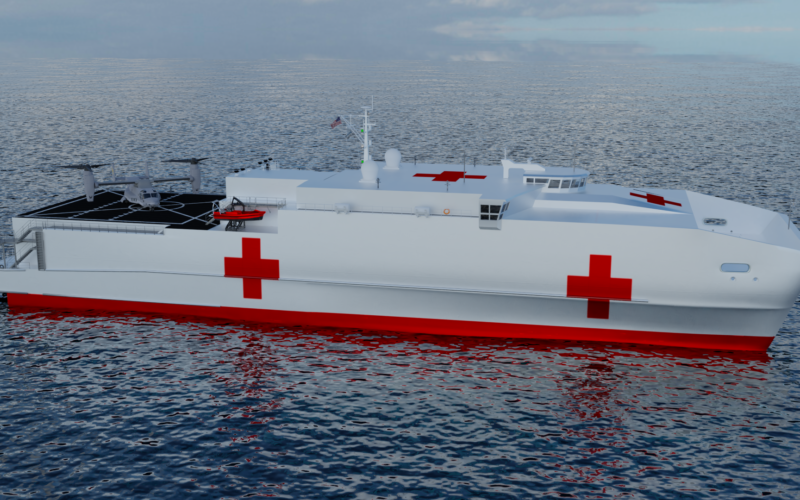(WASHINGTON) — The builder of the Navy’s Spearhead-class expeditionary fast transport (EPF) has won a $44 million contract to develop an autonomous version of the aluminum catamaran, according to a June 7 Pentagon contract announcement.
The modification to the future USNS Apalachicola (EPF 13) will allow the 1,500-ton ship the option to operate either autonomously or in a manned configuration, according to a statement from Austal USA.
“The work will include installation of a perception and autonomy control suite, as well as several automation enhancements to the machinery plant improving hull, mechanical, and electrical (HM&E) reliability while reducing the amount of personnel required for operations and maintenance at sea,” reads a statement from the company provided to USNI News. “Austal originally designed the EPF with a highly automated machinery plant that requires only a small team to crew the ship. This not only reduces cost, but also centralizes ship operations to the bridge.”

Half of the funding is set to come from the fiscal year 2021 shipbuilding budget as part of an add Congress included to develop an in-production EPF as a prototype for an autonomous ship. Austal USA has put forward the EPF platform as an option for the Navy’s large unmanned surface vessel (LUSV) in the past. The company has shown models of the EPF with vertical launch cells at trade shows. The models are in line with the Navy’s goal of developing an unmanned vessel to field a battery of missiles to work in conjunction with manned surface combatants.
“The evolution of this platform and its deployed performance from humanitarian assistance to operational support brings unmatched value to the warfighter,” Austal USA interim President Rusty Murdaugh said. “The potential of the EPF to operate unmanned opens the door to a range of new missions for the EPF ranging from logistics support to mine warfare and strike operations using vertical launch systems (VLS).”
Austal was one of six companies that won a collective $42 million in study contracts to develop the LUSVs. Along with Austal, Huntington Ingalls Industries, Fincantieri Marinette, Bollinger Shipyards, Lockheed Martin and Gibbs & Cox each won about $7 million to work on LUSV.
EPFs 14 and 15 are currently being developed as a Flight II version of the hull that will include a medical facility as part of a late February $235 million contract modification, USNI News reported in March.
“Beginning with EPF 14, the EPF Flight II configuration enhances current EPF capabilities by including health services (a combined forward resuscitative care capability with a limited intensive care unit (ICU) and medical ward) to the ship while maintaining most of the original mission requirements of the ship,” Naval Sea Systems Command told USNI News in March.
– U.S. Naval Institute

